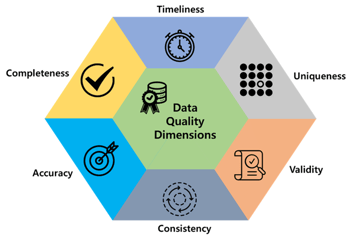
-
Mismatched Records: Even small structural changes during transformation can lead to missing or duplicated records post-migration.
-
Silent Data Corruption: Without proper checks, critical business data can silently become outdated, incorrect, or incomplete.
-
Regulatory Risk: Industries bound by compliance frameworks such as HIPAA, GDPR, or SOX cannot afford even slight data discrepancies. (Telmai)
-
Operational Disruption: Data inconsistencies can lead to failed reporting, inaccurate analytics, and misinformed business decisions
-
Automated Reconciliation: Compares source and target environments for completeness, ensuring no data is lost or duplicated during migration.
-
Integrity Checks: Detects discrepancies in data values, schema structures, and missing records, safeguarding against data corruption.
-
Audit-Ready Reports: This generates compliance-ready validation reports, facilitating adherence to regulatory standards such as HIPAA and GDPR.
-
Real-Time Alerts: These notify stakeholders of validation errors as they occur, enabling immediate corrective action. (Heliosz)
-
Scalable for Big Data: Whether you're migrating 1 million rows or 1 billion, the framework scales with ease across cloud, hybrid, or on-prem environments.
-
Migration Timelines Shrink: Automation eliminates long cycles of back-and-forth validation, reducing migration project durations by 30–50%.
-
IT Teams Reclaim Focus: Engineers are freed from tedious comparison scripts and spreadsheets, allowing them to focus on system architecture and innovation.
-
Regulatory Readiness Improves: With built-in audit logs and validation reports, compliance documentation is faster and more accurate.
-
Data Governance Gets a Boost: The framework can be embedded into ongoing data pipeline monitoring, ensuring long-term data quality—not just during migrations.
-
Stakeholder Confidence Rises: Business users and leadership gain real trust in the numbers they see, knowing their insights are built on validated foundations.
-
Fewer Post-Migration Fixes: By addressing problems upfront, businesses avoid the costly errors and downtime caused by dirty or incomplete data. (Kellton)
-
A global insurance company migrating its ETL pipelines from Informatica PowerCenter to AWS Glue faced challenges in validating data transformations and ensuring completeness. By implementing PDI’s Data Validation Framework, they achieved a 30% reduction in validation efforts through automation, ensuring data integrity during ETL migration and accelerating go-live readiness by identifying and resolving discrepancies early.
-
A healthcare provider transitioning from an on-premises Oracle Data Warehouse to Google BigQuery needed to validate billions of records across complex schemas while maintaining regulatory compliance. Utilizing PDI’s framework, they experienced 50% faster validation with AI-powered reconciliation, ensured regulatory compliance with audit-ready validation reports, and minimized business disruption by proactively resolving discrepancies before production deployment.
-
Initial Setup Time: Although designed for rapid deployment, configuring validation rules for unique business logic may take initial planning.
-
Cross-Team Collaboration: Data validation spans DevOps, DBAs, BI teams, and compliance. Coordination across these roles is essential.
-
Training and Onboarding: The framework is intuitive but powerful, ensuring that teams know how to customize and interpret results, which is key to unlocking its full potential. (Astera)
-
Continuous Tuning: As data models evolve, so should validation logic. Maintenance isn’t heavy, but it is necessary for long-term success.

Pacific Data Integrators Products
Pacific Data Integrators Offers Unique Data Solutions Leveraging AI/ML, Large Language Models (Open AI: GPT-4, Meta: Llama2, Databricks: Dolly), Cloud, Data Management and Analytics Technologies, Helping Leading Organizations Solve Their Critical Business Challenges, Drive Data Driven Insights, Improve Decision-Making, and Achieve Business Objectives.




